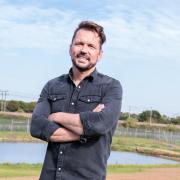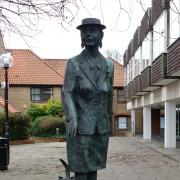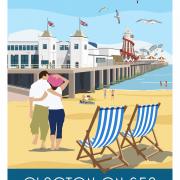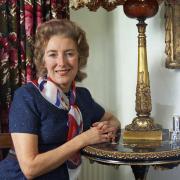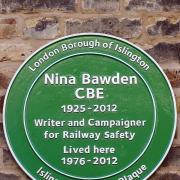In a new monthly series for Essex Life, Mica Bale compiles a list of 10 lesser-known facts about the county that might just raise an eyebrow
1) As a lush and picturesque county, it is not hard to believe that Essex is home to the second largest village green in the UK. Great Bentley’s green covers an impressive 43 acres and in Edwardian times was even used as a golf course!
Today, the green is very much at the centre of village life and is used as the location for an annual carnival and motorcycle rally.
2) Were you aware that the Saffron Walden turf maze is the largest of its kind in the world and is one of just eight surviving turf mazes in England? Turf mazes were once quite a common sight in Europe and at least 60 others were known to exist.
The maze is first mentioned in 1699 when the council accounts records that the sum of 15 shillings was paid to cut the grass! However, many believe the maze dates back 800 years.
3) On January 31, 1953, the North Sea Flood hit the shores of Britain and among the 307 dead were many Essex locals. Amid all the destruction of property and tragic loss of life, Essex residents were quick to pull together.
One of the worst affected areas was Canvey Island, but one survival story that especially shone through was that of Miss Fowler and her brother. Both octogenarians, the couple were rescued from their home on Canvey Island after four days without food, water or light.
4) Did you know that Clinton Cards, the renowned national greetings card retailer, began life in Epping?
Today the store is a familiar sight on the high street across the UK, but the very first store was opened in 1968 by Don Lewin, who borrowed £500 to create Clinton Cards. Don Lewin selected the name Clinton Cards after his young son.
5) Were you aware that some historians claim that Robert the Bruce was a man of Essex? Many believe that the great Scottish hero was actually born at Montpelier’s Farm in Writtle near Chelmsford in 1274.
It seems that Bruce’s father was in Westminster for the coronation of King Edward I in the summer of 1274 and his son was born in the July. Added to the fact that Writtle was under the ownership of his father, there is certainly a possibility of Robert the Bruce being an Essex boy!
6) Although it’s hard to believe at this time of the year, Essex is proudly home to one of the driest locations in Britain. According to official statistics, it is less likely to rain in St Osyth, near Clacton, than almost anywhere else in the county, making it a great holiday destination the weather really can’t spoil.
St Osyth is also famed for being the birthplace of Benjamin Golding, founder of Charing Cross Hospital.
7) One of the most famous doctors in history must be Queen Elizabeth I’s personal physician, William Gilbert, who was born in Colchester. After practising medicine for many years in London, he became the physician to the Queen during her final years.
After her death, he was appointed to King James I, although the doctor’s own death quickly followed, likely due to the plague. Gilbert is also credited by many to be one of the earliest founders of electricity and magnetism, and is likely to have originated the word ‘electricity’.
8) The oldest surviving motor lifeboat is the James Stevens No.14, which was the second lifeboat to serve at Walton on the Naze. She was one of 20 other vessels built thanks to a legacy fund worth £50,000 left by local businessman James Stevens and she was completed in 1900.
The lifeboat’s motor was installed a few years later in 1905 and she is credited as being used to launch 126 times and rescuing a total of 227 people.
9) Built nearly 40metres deep into the very heart of the landscape, hidden under an unassuming bungalow in the woods, is the Kelvedon Hatch Secret Nuclear Bunker.
The bunker was built from 1952 to 1953 as part of Britain’s defence against the growing threat of a nuclear attack. The bunker was designed to safeguard 600 individuals in case of the need to ensure the survival of the population in the face of a nuclear war.
10) Built in the early years of Henry VIII’s reign, Layer Marney Tower is the largest Tudor gatehouse in Britain and has a total of 99 steps to the top.
As there is no stone in Essex, Lord Marney, who built the tower in the 1520s, used terracotta as decoration to add to the overall grandeur and expensive aesthetics.
________________




